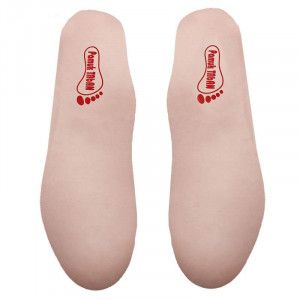| Pamouk Taban |

| Registration Date | 19 Dec 2019 |
| Revision Date | 19 Dec 2019 |
| Share |
Textile Shoes and Bag
InsoleSilver
Ag Nanoparticle /Nanopowder CAS Number : 7440-22-4Pamook Taban Men's shoe insole is a medical leather insole that putting it in the shoe minimizes the unpleasant smell of the foot. Moreover, it provides a very soft surface beneath the foot which prevents foot boredom and damage to the feet, knees, and waist. Using antibacterial technology Prevention foot transpiration and its bad smell Prevention the generation and growth of various bacteria in socks, shoes, and feet Anti-allergic Ease of use
As an interior part of a shoe, the insoles are in direct contact with the human foot. Various factors are considered in the design of shoe insoles such as size, curvature shape of the foot, impact damping capacity, the ability of controlling moisture, odor and bacteria. In addition to creating an unpleasant and annoying smell, foot transpiration causes the growth of bacteria and fungi between fingers and infectious diseases. Considering the importance of feet health, nowadays, various methods are employed such as the using nanoparticles in fabrication of insoles. Such insoles do not cause allergic reactions and do not harm the human body. The nanoparticles cause structural changes in the bacteria by reacting with their outer membrane and eventually destroy them.
Antibacterial properties obtained by using silver nanoparticles in the shoe insoles prevent the growth of bacteria and fungi. The antibacterial effect of silver increases significantly in the nanometer dimension in a way that it can eliminate more than 650 bacterial species.
According to the national standard number INSO 21145, this product contains nanoparticles and is eligible for being placed in the field of nanotechnology.
Antibacterial activity is an indicator of the ability of the product to eliminate the bacteria which are in contact with it, and is obtained from the logarithmic comparison of the number of bacteria present on the control sample and the produced sample after 24 hours of contact with the bacteria. According to the standard, when the anti-bacterial activity of the product is between 2 and 3, the term "effective" can be used, while if the antibacterial activity is greater than 3, it has a strong effect.